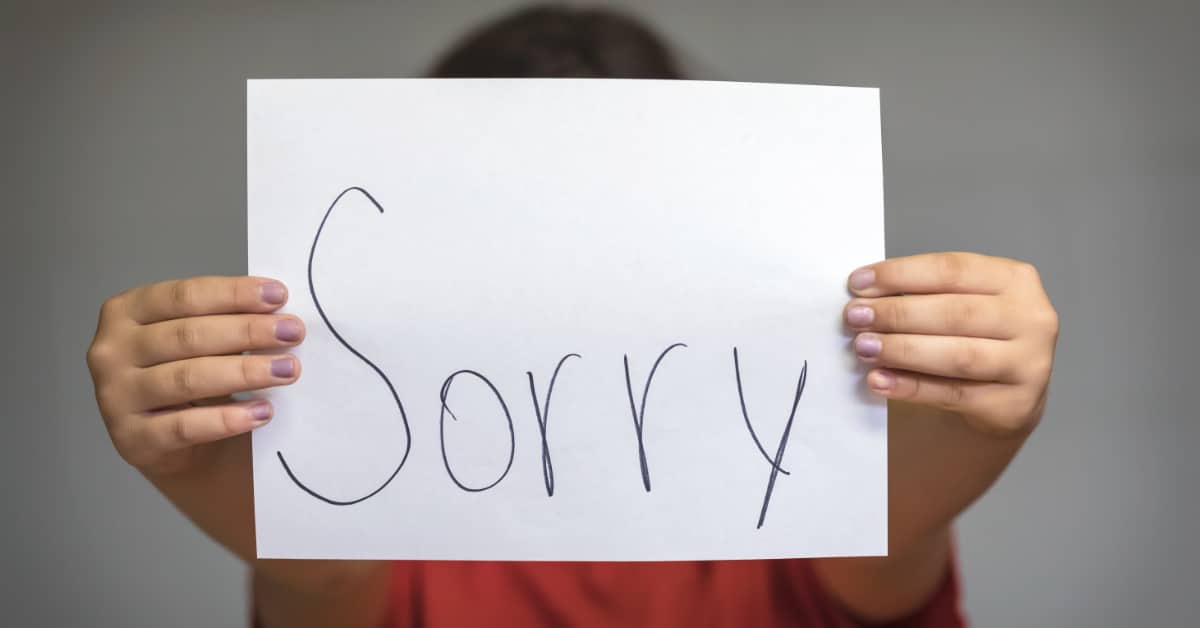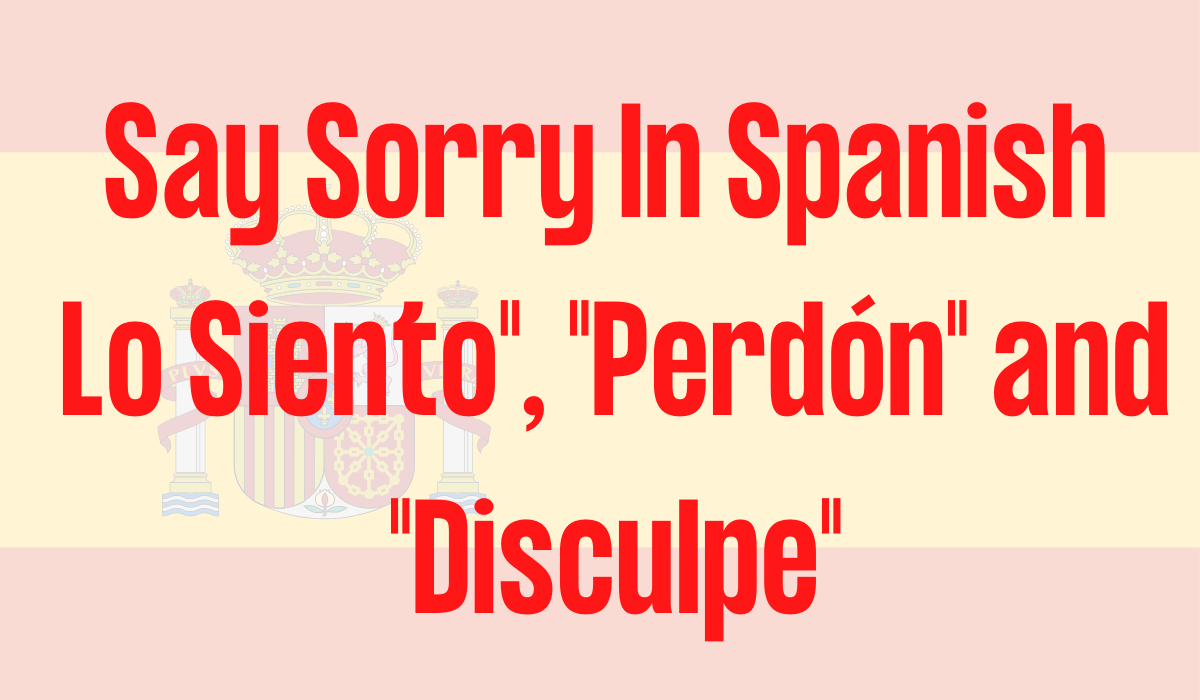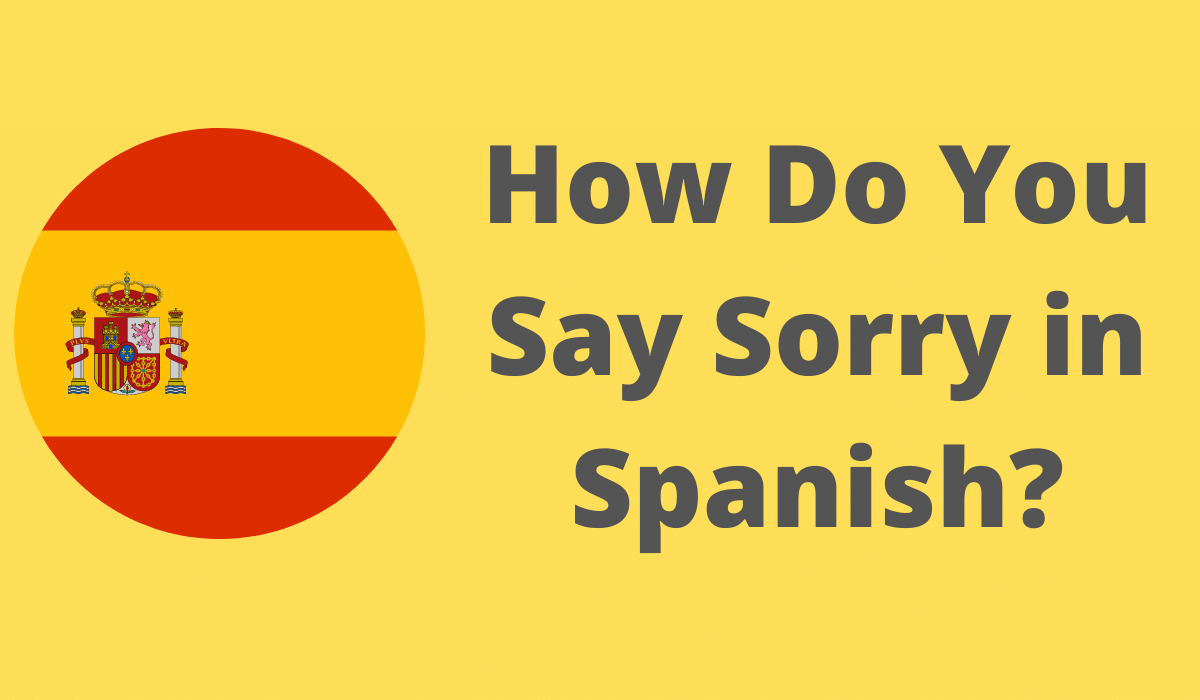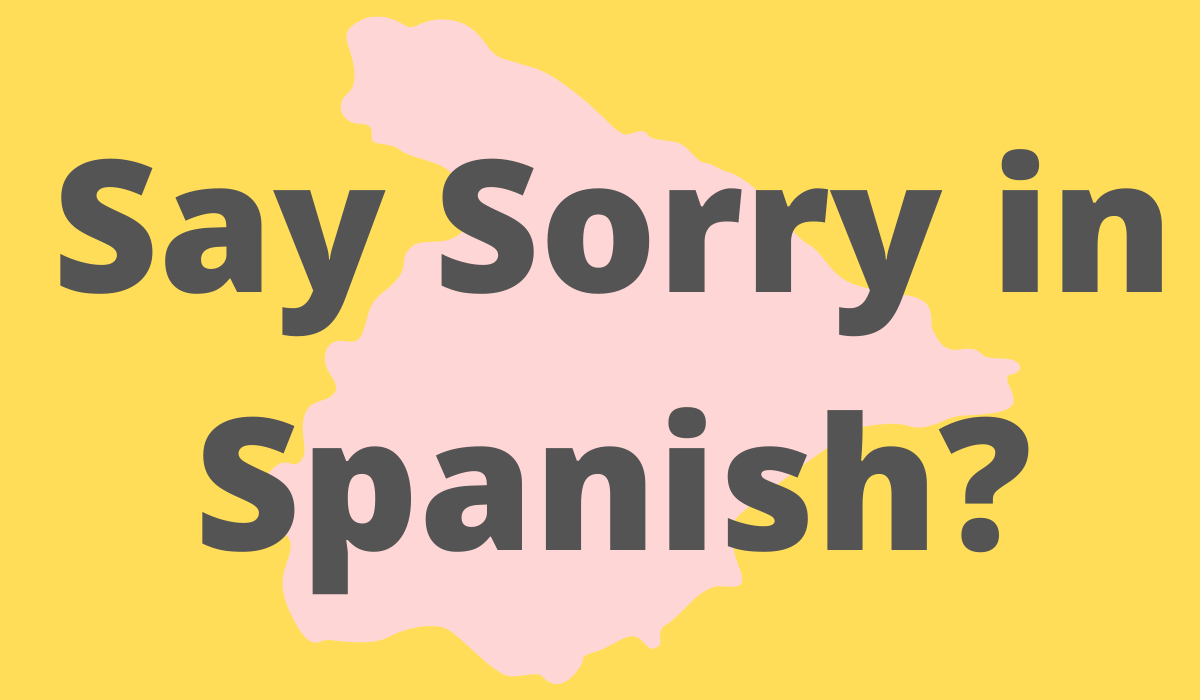
20 Ways to Say Sorry in Spanish That Aren’t Just “Lo Siento” FluentU
There are many ways to apologize in Spanish. Basically, "Lo siento" would be the most common way to say "I am sorry" in Spanish, but we also have some more formal phrases as well. It is very common to use the verb "Disculpar" meaning "to excuse" or "to apologize". This verb is a very polite way to apologize in Spanish and.

How to Say Sorry in Spanish 10 Spanish apologies, plus responses
Lo siento ( I'm sorry) Just like " perdón ", " lo siento " is both common and can be used in various situations to say "sorry" in Spanish. However, " lo siento " extends to even more usages. As we'll see later on in this article, this phrase can also be used to show you are sorry for someone's loss. If you are feeling.

How to say / pronounce I am sorry in Spanish tutorial, Lo Siento YouTube
Disculpen (In Latin America) Or if you're in Spain you need to use: (Vosotros) "Disculpad". This is the same verb "Disculparse" impacted by the pronoun "Ustedes" or "Vosotros. These are the plural for "you" in Spanish in Latin America and Spain respectively. You may use any of those when you want to say sorry to a group of.

Learn Spanish & How To Say "Sorry" in Spanish Learn Spanish Language
Spanish. English. Lo siento mucho, [amigo] I'm very sorry, [friend] Perdóname, [hermano] Forgive me, [brother] The first example uses the common apology "lo siento," which translates to "I feel it" but is the equivalent of "I'm sorry" in English. The adverb "mucho" (very) adds strength to the apology, and the use of.

How To Say I M Sorry In Spanish
Quick Answer. I'm sorry. = Lo siento. There are lots of different translations for I'm sorry in Spanish. Check out some of the most common ways to say I'm sorry in Spanish below! 1. I'm sorry = I apologize. Used to apologize for something that was your fault. Translations: lo siento, lo lamento, perdone, or perdón.

Ways to Say Sorry in Spanish for Different Occasions
How to Say Sorry in Spanish. 1. Lo siento — I'm sorry. Context: To ask for forgiveness, express remorse or to express sympathy. This is probably the most commonly used expression for asking for forgiveness and making other people feel we understand what they are going through. There are many different forms of lo siento :

How Do You Say Sorry in Spanish? SolutionHow
If you're traveling to a Spanish-speaking country, it's important to know how to apologize in Spanish. Saying "sorry" is not only a basic courtesy, but it can also help you navigate various social situations. Whether you accidentally bump into someone on the street or make a mistake at work, knowing how to apologize in Spanish

How Do You Say Sorry in Spanish? SolutionHow
These phrases can help you convey your need to apologize in Spanish or offer a sincere apology: Lo siento - "I'm sorry". Example: Lo siento por mi comportamiento. (I'm sorry for my behavior.) Perdón/Perdóname - "Forgive me". Example: Perdón por la confusión. (Forgive me for the confusion.) Disculpa/Discúlpame - "I.

How Do You Say Sorry in Spanish? SolutionHow
1. Use "lo siento" to express remorse or ask for forgiveness. Lo siento, which literally means "I feel it," is the phrase that most novice Spanish speakers will learn as the all-purpose apology. You can also say "lo siento mucho" or "lo siento muchísimo," meaning "I'm so sorry" or "I'm very sorry."

How do you say sorry in Spanish? 19 ways to apologize in Spanish!
I'm sorry to hear that. can also about the loss or death of someone, particularly in the following structure: I'm sorry for your loss. In this case, using wouldn't be enough, and is the only option that works using this formula. In line with expressing your regret in Spanish, this phrase means "I regret what I did.".

How to Say "Sorry" in Spanish Lo Siento & More!
2- Lo siento. Lo siento is another common way to apologize in Spanish, and is usually the first one you learn when starting to learn Spanish, because it's not as limited in meaning as the word perdón. It literally means "I feel it" and it translates to " I'm sorry .". It can be used in a much wider sense than the word perdón: You.

How to Apologize in Spanish 11 Steps (with Pictures) wikiHow
And, "lo" it's a pronoun that indicates the thing you are sorry about. You can use "Perdón" or "Lo siento" (or "Lo siento mucho " -I'm very sorry-)whenever you want to express this feeling of regret. There is also another verb to express this: "Lamentar" also means "to regret". So, if you pick this verb, you.

How to Say Sorry in Spanish
Perdonar. Perdón. 3 Other Ways to Apologize in Spanish. "My Apologies" in Spanish. "I Owe You an Apology" in Spanish. Te Pido Disculpas and Te Pido Perdón. How to Forgive in Spanish. Say That You Are Sorry in Spanish. Even if it is a hard task, learning how to correctly say "sorry" in Spanish is important.

How to Say Sorry in Spanish YouTube
12. Lo siento mucho - I am very sorry. " Lo siento mucho " is another way to say you're extremely sorry in Spanish. This phrase reinforces the strength of your apology and shows that you understand the gravity of the situation. After a significant mistake, you might say, " Lo siento mucho, no fue mi intención herir tus sentimientos.

¡Lo Siento! and 25 More Ways to Say "Sorry" in Spanish
Disculpa or Disculpe = Excuse me. 3. Lo siento or Lo lamento = I'm sorry. 4. Perdón or perdóname = sorry. 5. Con permiso = Excuse me. 6. Different ways to say sorry in Spanish and ask for forgiveness.

How Do You Say Sorry in Spanish? SolutionHow
4. te pido/le pido disculpas de corazón. Meaning: I sincerely apologize; I apologize from the heart. Context: Te pido disculpas (informal) or Le pido disculpas (formal) can be used to apologize or ask for forgiveness. Adding de corazón is for more dire situations when you really need to emphasize your remorse.